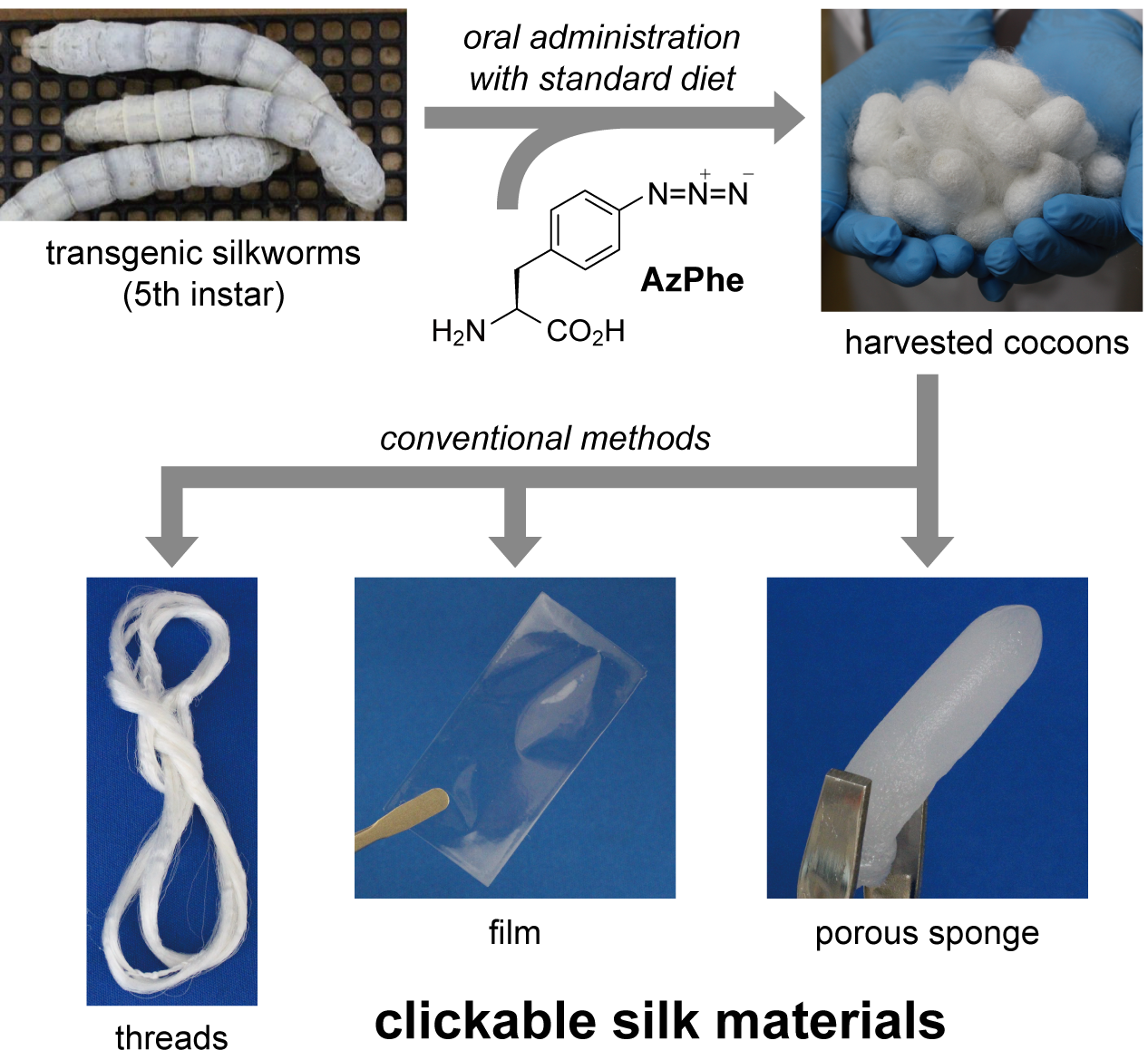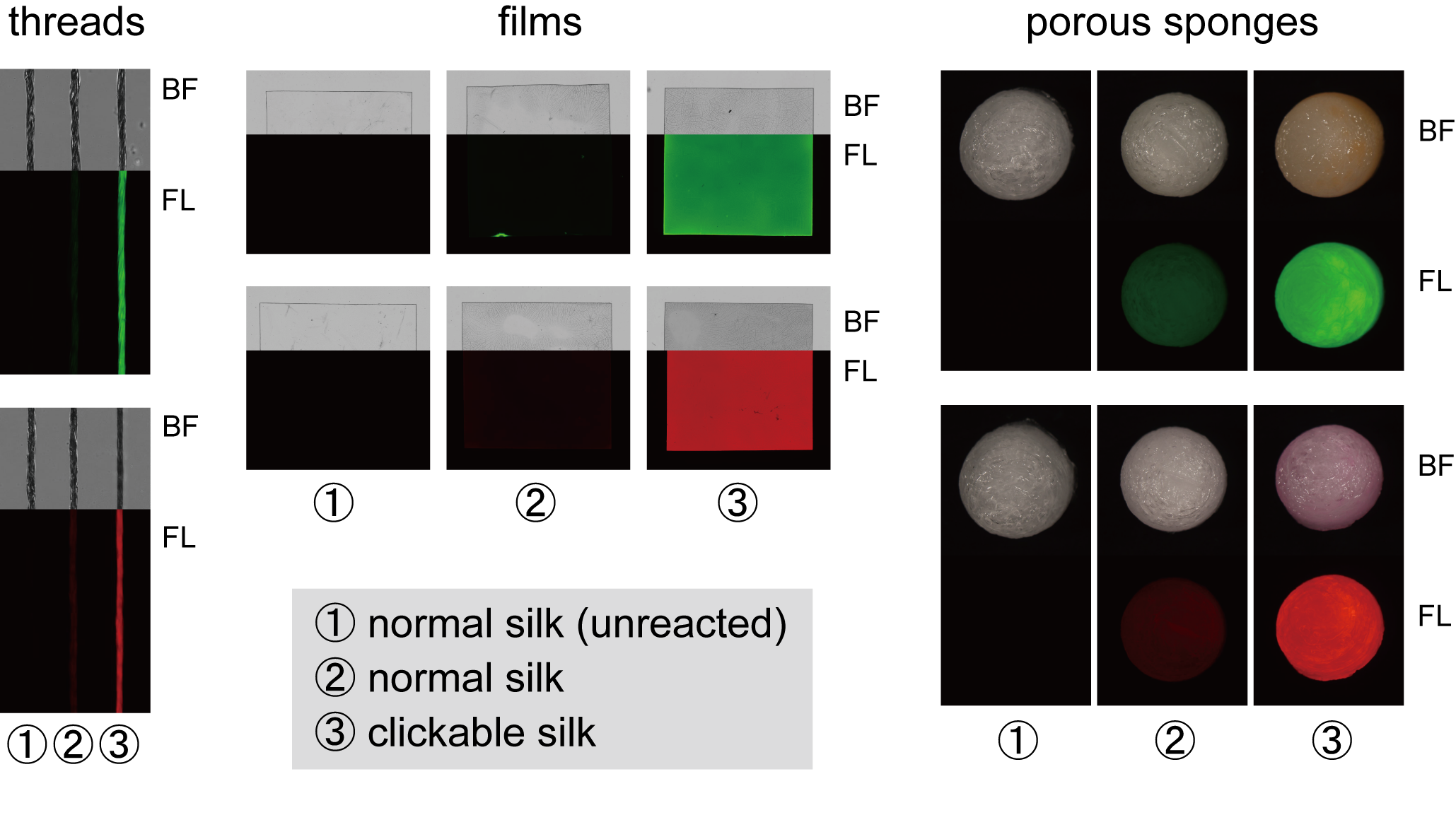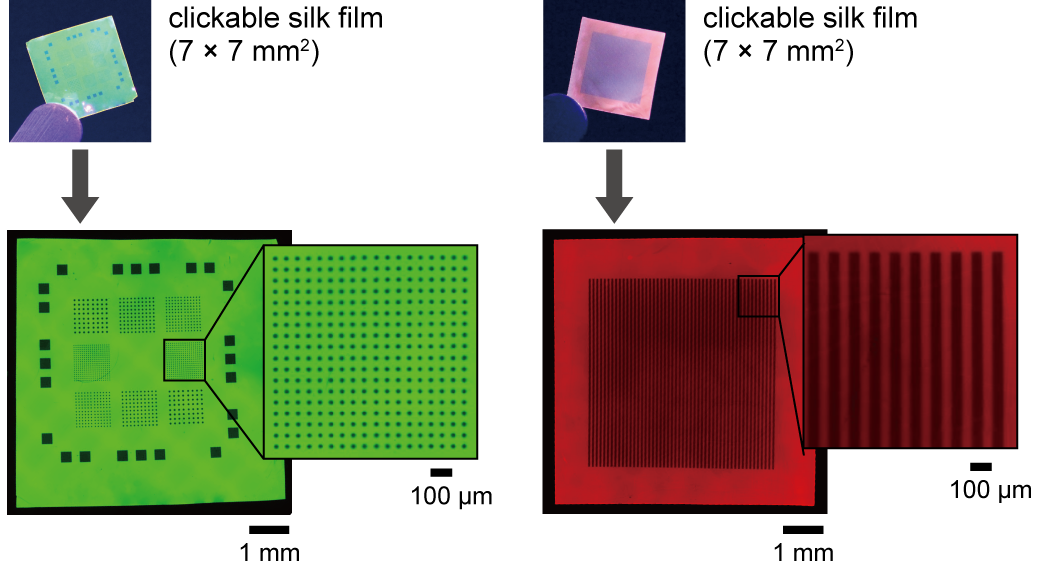Introduction: Silk fibroin protein from the domesticated silkworms, B. mori, has been studied as a candidate for biomaterials development due of its mechanical toughness, biocompatibility, and biodegradability[1]. In this study, a rapid, easy, and flexible method to modify silk fibroin was developed based on the unnatural amino acid mutagenesis methodology of proteins[2]. We previously succeeded in incorporating an unnatural amino acid, 4-azidophenylalanine (AzPhe) (Fig. 1), into silk fibroin by expressing a mutant of phenylalanyl-tRNA synthetase (PheRS) with expanded amino acid recognition capacity in silk glands[3]. The incorporation of AzPhe has made silk fibroin “clickable”: desired functional molecules could be attached to it by azide-specific click reactions[2]. In this paper, the fabrication of materials from clickable silk and their functionalization by click reactions were investigated. Photo-patternability of clickable silk materials was also investigated.
Materials and Methods: Fig. 1 illustrates the preparation of clickable silk materials: AzPhe mixed in a commercially-available standard diet was administered to transgenic silkworms (5th instar) until they started to spin cocoons. The harvested cocoons were then processed into threads, films, and porous sponges with established techniques[4].

Results and Discussion: Clickable silk materials (threads, films, and porous sponges) were subjected to click reactions with carboxyrhodamine 110 alkyne (green fluorescence) or sulforhodamine B DBCO (red fluorescence) (Fig. 2). In any forms, the clickable silk materials were distinctly modified by the fluorescent molecules, thus demonstrating the high specificity of click reactions toward azide groups. We attributed the weak fluorescence observed for normal silk materials to non-specific binding of the reagents.

Since azide groups in AzPhe are known to exhibit photolysis upon UV irradiation, we expected that the reactivity of azide groups would be geometrically controlled on clickable silk materials. Clickable silk films (cut to 7 × 7 mm2), irradiated with 365 nm UV light for 1 h through micropatterned photomasks, were reacted with carboxyrhodamine 110 alkyne (green fluorescence) or sulforhodamine B DBCO (red fluorescence) (Fig. 3). The micropatterns on the photomasks were successfully transferred to clickable silk films, demonstrating that desired functional molecules could be directly patterned onto clickable silk materials on a micrometer scale.

Conclusions: Clickable silk materials with photo-patternability were created by the incorporation of an unnatural amino acid, AzPhe, into silk fibroin. They were easily modified by click reactions, suggesting that they could be a versatile platform on which to produce functionalized biomaterials for wide applications. This study also demonstrates the potential of the unnatural amino acid mutagenesis of proteins to generate novel types of protein-based biomaterials.
This work was supported by JSPS KAKENHI Grant Numbers 24688008,15K07800.
References:
[1] Li, G., et al., Silk-Based Biomaterials in Biomedical Textiles and Fiber-Based Implants. Adv. Healthc. Mater., 2015, 4, 1134-1151.
[2] Lang, K. and J.W. Chin, Cellular Incorporation of Unnatural Amino Acids and Bioorthogonal Labeling of Proteins. Chem. Rev., 2014, 114, 4764-4806.
[3] Teramoto, H. and K. Kojima, Production of Bombyx mori silk fibroin incorporated with unnatural amino acids. Biomacromolecules, 2014, 15, 2682-2690.
[4] Rockwood, D.N., et al., Materials fabrication from Bombyx mori silk fibroin. Nat. Protocols, 2011, 6, 1612-1631.